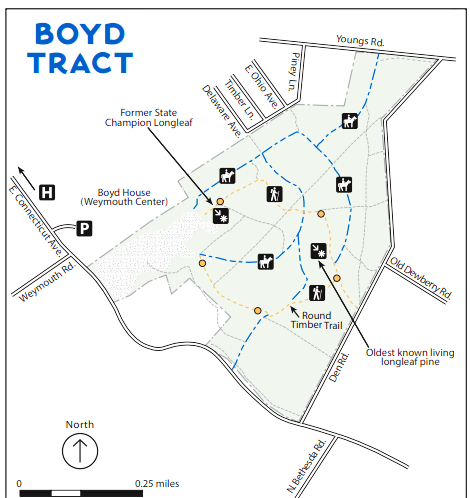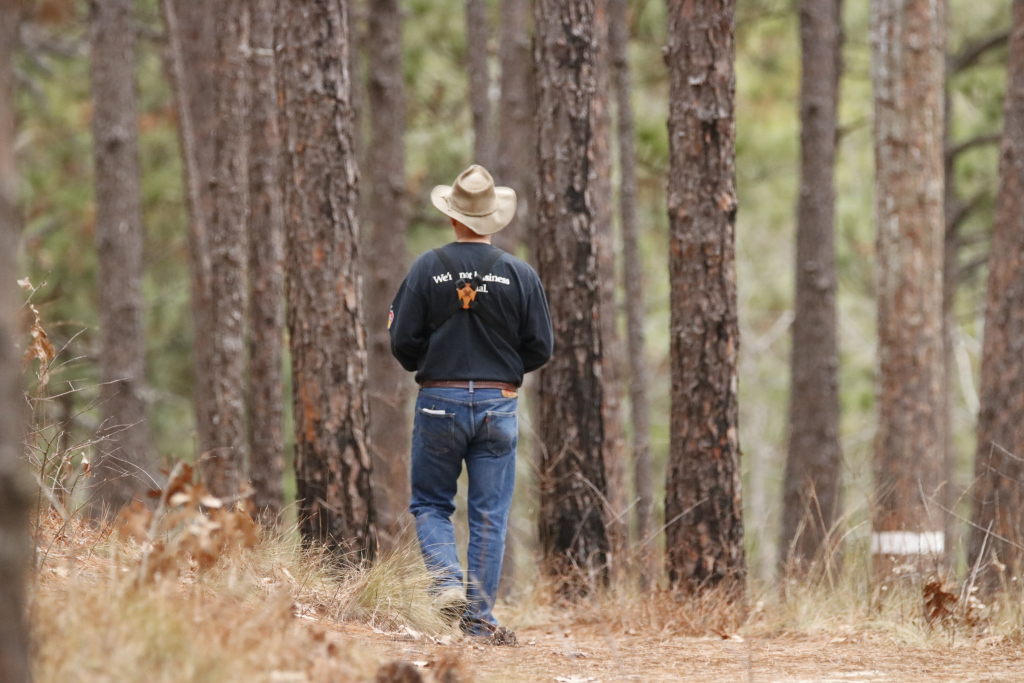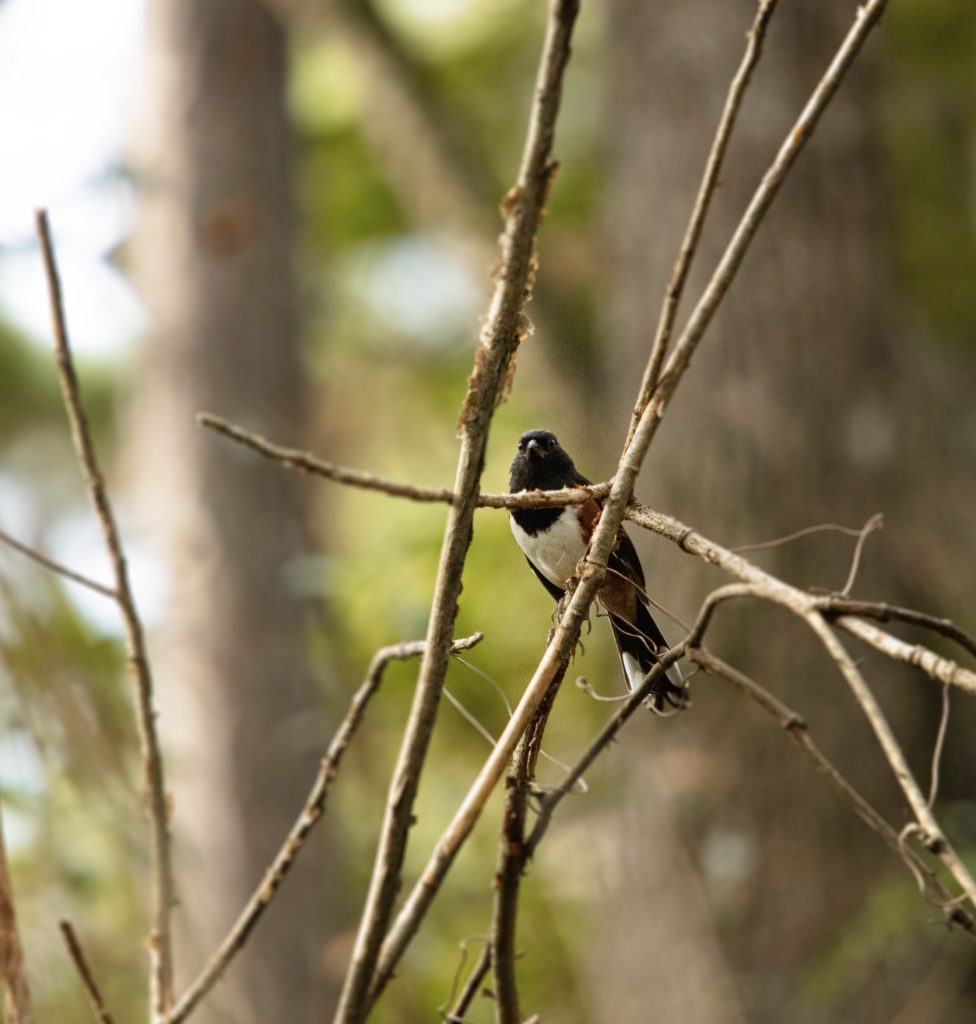Here’s a beautiful little Prairie Warbler which I was lucky to encounter while birding at the Weymouth Woods Sandhills Preserve near Pinehurst NC.
My guests and I were making our way down the wooded fern lined trail when the bird flew down and began to forage in the brushy undergrowth down low beneath the pines.
Usually these tiny birds fly away as soon as I spot one so it was super cool to get an eye level view of one at close range.
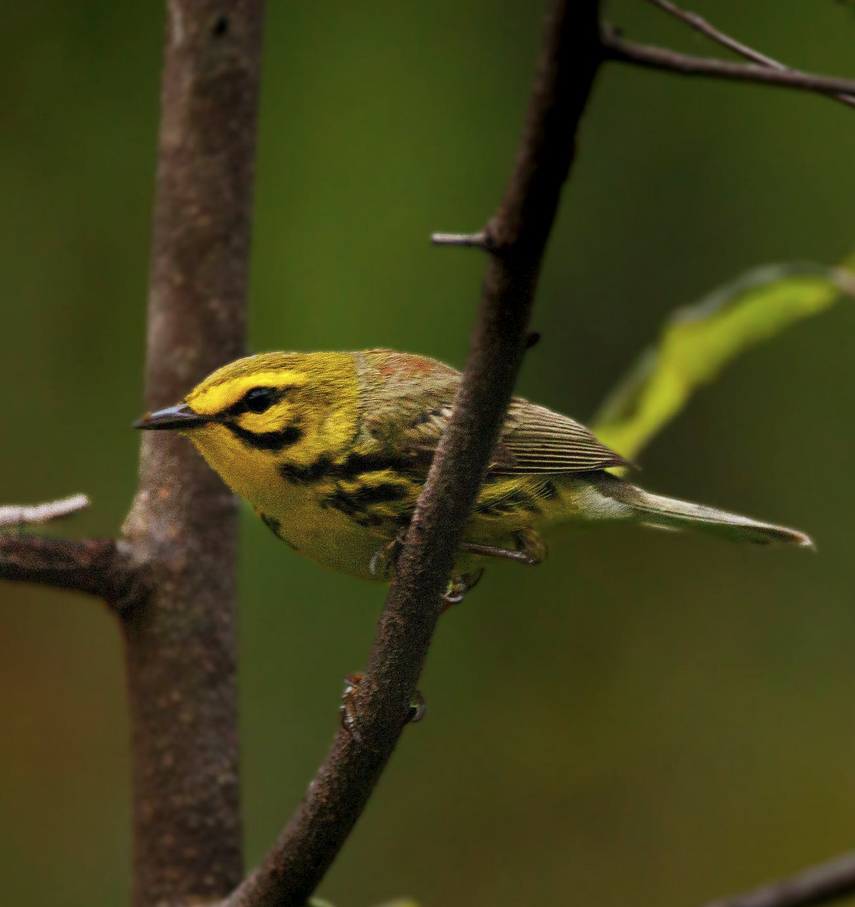
These lovely little beauties are active birds, often wagging their tails as they search for the six or eight legged snacks that make up the bulk of their diet. When they get stuck for the winter in colder locations (like central NC) they’ll also supplement their diet with the sap flowing from trees and even berries when available.
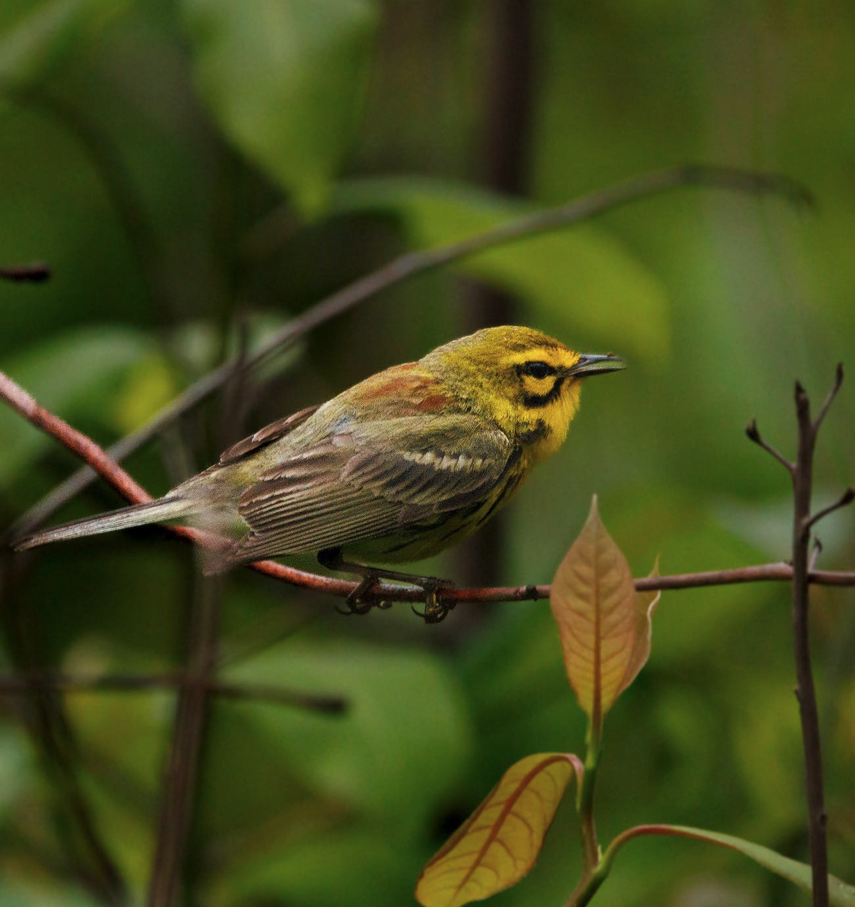
Prairie Warblers breed across the entire state of NC. Now that spring has arrived, they’re busy building their nests in openings with patches of dense woody understory vegetation, such as overgrown fields with shrubs, or young regrowing forests. Their cup shaped nests are placed in trees or shrubs, generally less than 10 feet above the ground.
Once the eggs are laid, it takes between 12 to 14 days for them to hatch. Both parents share the duties of rearing the chicks.
Prairie Warblers are generally a spring and summertime resident of North Carolina but each year there are reports of a few of them which end up spending the winter here.
For the most part though they’ll stick around until late September before departing to their wintering grounds in the Caribbean, and along the east coast of Central America.
Photos by @sally_siko of @bestlife_birding both captured on my mighty mirrorless monster, the @canonusa #R5






























